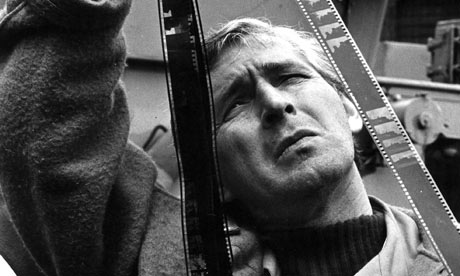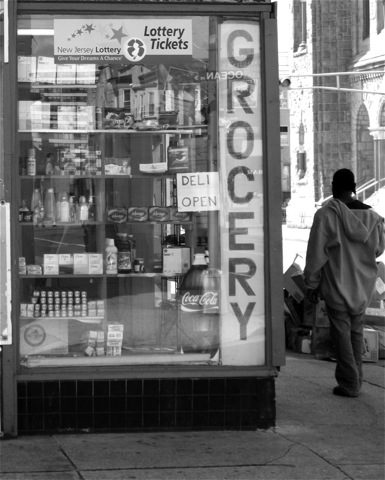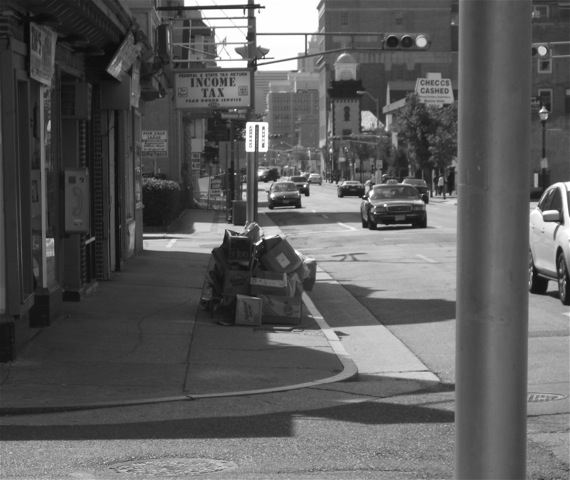In 1955, film maker Paul Wendkos shot The Burglar adapted from the Goodis novel of the same name. The film was released in 1957. Both the novel and the film begin in Philadelphia and end in Atlantic City.
His first feature was the shamefully underestimated film noir, The Burglar, starring Dan Duryea as a jewel thief and Jayne Mansfield as his sexy accomplice. Mansfield was unknown at the time of shooting in 1955, but the film was released two years later by Columbia Pictures to cash in on her rise to fame. Written by David Goodis, from his own novel, it was atmospherically photographed in urban landscapes, ending with an exciting chase through the Steel Pier in Atlantic City, New Jersey. After the belated release of The Burglar, Wendkos moved to Hollywood, where he made 15 more feature films, at the same time as TV films, from 1957 to 1971, until he gave himself up to television exclusively, the sort of move that tends to diminish directors' standing among film critics.---Paul Wendkos obituary,
http://www.guardian.co.uk/film/2009/dec/01/paul-wendkos-obituary

Wendkos in 1957, the year he moved to Hollywood. Photograph: Anonymous/ASSOCIATED PRESS
Guardian obiturary
In September 2011, Aaron Finestone and his collaborator hard boiled novelist Zoey San Clemente visited Atlantic City to find the locale of the novel. The book has Nat Harbin (the burglar-in-chief, staying at a hotel off Tennessee Avenue between Pacific Avenue and Atlantic Avenue. A block to the north on Ocean Avenue, I found this hotel, which could have been the model for the hotel in the novel.

"The cab pulled up in front of a miserable-looking place on a small street off Tennessee Avenue. Harbin paid the fare, tipped the driver a quarter and said he wished he could give more. The driver smiled good-naturedly, threw the cab in gear and drove it away.
They entered the hotel and the clerk took them up to a room on the second floor. It was a two-dollar double. It look terrible. The window opened out on the wall of another building and Baylock said they would suffocate in here. Harbin said they wouldn't be here long enough to suffocate."
The neighborhood described in the novel was grimey. It has not changed. The photos below are Pacific Avenue, a couple of blocks from the hotel.


In the novel, Nat Harbin leaves the hotel and goes around the corner to a cheap restaurant on Atlantic Avenue. In 2011, a county office building stands on the west side of Atlantic Avenue. In mid-afternoon, people were lined up in front of the county building. Were they applying for welfare or unemployment?

I found this restaurant on the east side of Atlantic Avenue north of Tennessee Avenue. Could an earlier incarnation of this building been the model for the restaurant in novel?
"He glanced at his wristwatch. Eight minutes. He had been out for eight minutes, and twenty-two minutes remained. A restaurant sign displayed itself on the other side of the street. He crossed and entered, sat down at a sloppy counter and told the waitress he wanted coffee. The waitress made a comment about how hot it was today for coffee, and maybe he would like it iced. He said he didn't want it iced. The waitress said it was good when it was iced. Harbin said he had never tried it iced and would appreciate their terminating the discussion; the waitress said the reason the world was like it was could be attributed to the fact that too many people were hard to get along with."
Notwithstanding the casinos, A.C. is still a noir town.

Cullen Gallagher reviews The Burglar
From Pulp Serenade, May 3, 2009
"The Burglar" by David Goodis (Lion Books 1953/Black Lizard 1991)
David Goodis is anything but a forgotten author – but his 1953 novel The Burglar might just qualify as “forgotten.” Originally published by Lion Books, it was reprinted by Black Lizard in 1991, and is now once again out of print. Even beat-up copies fetch a decent price online, which certainly limits the number of readers who can get their hands on it. Its scarcity is a disservice to Goodis’ legacy, as The Burglar not only stands out as arguably one of his strongest works, but also one of his most unique. Unlike the quotidian characters with latent criminal desires that are typically the focus of his works, The Burglar instead chooses a quartet of thieves. And nor are they washed up and broken down like the musicians and artists of Down There or The Street of No Return – these crooks are savvy and successful, as the opening heist scene exemplifies.
Even though they just stole a hundred thousand dollars worth of jewels, all is not well amongst Nat Harbin’s gang. First there’s the girl – Gladden – who is in love with him, and whom he has brought up like the little sister he never had. Bored, lonely, and unsatisfied, she daydreams at the dinner table. When Nat reminds her they are both still young, she coldly replies, “We’re half in the grave.” And then there are the two goons – Baylock and Dohmer – competent at their craft, but lacking Nat’s artistry and Gladden’s heart. And then there is Nat himself, a child of the depression whose parents suffered to save the family and died failures. He’s burdened by guilt – a sense of loyalty to a dead man who taught him everything he knows, and whose daughter he vowed to protect.
One day everything changes. Nat meets a woman in the bar, and suddenly he feels free – able to leave his life of crime behind him, able to leave those two goons in the dust. Able to say goodbye to Gladden. So he does – and that’s when he realizes he’s been trapped by a third party who wants to blackmail him and his cohorts and take all the jewels for himself. Responsible for breaking his family up, Nat is more vulnerable and alone – and guilty - than ever before.


The Burglar also stands out for its focus on a group dynamic as opposed to a solitary protagonist. (The only other two works of his that come to mind are Black Friday, which similarly concerns a band of thieves but the main character is an innocent man whom bad luck and fate conspired against, and The Blonde on the Street Corner.) This significance becomes apparent when you begin to examine the bitter homefronts of the sour relations of Retreat from Oblivion and the marital anxieties of Of Tender Sin: all of these characters are striving for a functioning homelife and unable to find it. But in The Burglar, the characters have created a working family in which not only does everyone have a role to perform, but everyone also profits in the end. But even this does not quell the latent paranoia and lingering ennui that lies beneath the surface of all of Goodis’ novels. And in the end, Harbin and his crew are no different than any of Goodis’ other characters: they destroy what they love and sabotage their own dreams.
And unlike The Wounded and the Slain, there is no pretense of a happy ending. Harbin and Gladden give everything they’ve got, only to discover that it isn’t enough. In Goodis’ world, it never is. And that is the most despairing of all of the author’s reoccurring themes. The one reassuring fact is that Goodis, like his characters, never gave up, and would go on to publish nine more novels, including the highly underratedSomebody’s Done For, a fitting title for his last novel, which is also arguably the pinnacle of his career.
A few quotes from The Burglar:
“The night air had a thick softness and the smell of stale smoke from the factories that had been busy in the day, and the smell of cheap whiskey and dead cigarettes and Philadelphia springtime.”
“Gerald was always contending that burglary is no special field of endeavor, and every animal, including the human being, is a criminal, and every move in life is part of the vast process of crime.”
“As matters stood, life offered very little aside from an occasional plunge into luxurious sensation, which never lasted for long and even while it happened it was accompanied by the dismal knowledge that it would soon be over.”
“He couldn’t speak. The thing that crushed down on him was the sum weight of all the years, and her voice was a lance cutting through it, breaking it all up and showing him it added up to nothing but a horrible joke he had played on himself.”
“Trouble? They don’t know what real trouble is. Look at them walking. When they take a walk, they take a walk, and that’s all. But you and I, when we take a walk it’s like crawling through a pitch-black tunnel, not knowing what’s in front, what’s in back. I want to get out of it. I want it to end, there’s no attraction and I want it to end.”
Read Cullen Gallagher's Pulp Serenade


